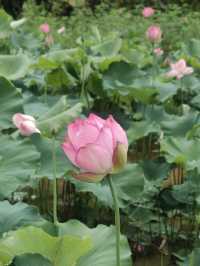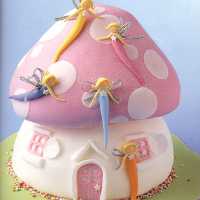I love this place
;
Royal Tasmanian Botanical Gardens Review
4.5 /572 Reviews






5/5
Royal Tasmanian Botanical Gardens
Posted: May 21, 2012
Like
Royal Tasmanian Botanical Gardens Frequently Asked Questions
More Questions
Preston_Dominguez: Queens Domain | Lower Domain Road, Hobart, Tasmania 7000, Australia
1 Answer
Jeremy_Dodson: I recommended Hobart,Salamanca Square,Royal Tasmanian Botanical Gardens,Salamanca Place,Tasmanian Museum & Art Gallery
1 Answer
Messiah_Dillon: Here are some hotels near Royal Tasmanian Botanical Gardens: The Corinda Collection,Salamanca Inn,Montacute Boutique Bunkhouse,Salamanca Terraces,Racv Hobart Hotel
1 Answer
Judah_Dillard: You could try Drunken Admiral,Daci and Daci Bakers,Salamanca Wharf Cafe,Da Angelo Ristorante,Cultura Espresso Bar & Restaurant
1 Answer
Popular Destinations
Phnom Penh Travel | New Orleans Travel | Sihanoukville Travel | Mountain Home Travel | China Travel | Caticlan Travel | Hohhot Travel | Abu Dhabi Travel | Nanjing Travel | General Santos Travel | Anaheim Travel | San Diego Travel | San Antonio Travel | Fukuoka Travel | Cagayan De Oro Travel | Hamburg Travel | Kashgar Prefecture Travel | Addis Ababa Travel | Wenchang Travel | Richmond Travel | Robertson Travel | Welwyn Hatfield Travel | Yongfeng Travel | Jingchuan Travel | Cotronei Travel | Lindsborg Travel | Verbania Travel | George Town Travel | Luocheng Travel | Biei Travel
Recommended Attractions at Popular Destinations
Bangkok attraction near me | Tokyo attraction near me | Manila attraction near me | Hong Kong attraction near me | Seoul attraction near me | Taipei attraction near me | Los Angeles attraction near me | New York attraction near me | Shanghai attraction near me | Kuala Lumpur attraction near me | Shenzhen attraction near me | Guangzhou attraction near me | Osaka attraction near me | Singapore attraction near me | London attraction near me | San Francisco attraction near me | Beijing attraction near me | Macau attraction near me | Bali attraction near me | Paris attraction near me | Orlando attraction near me | Jakarta attraction near me | Ho Chi Minh City attraction near me | Phuket attraction near me | Chicago attraction near me | Toronto attraction near me | Cebu attraction near me | Dallas attraction near me | Istanbul attraction near me | Dubai attraction near me
Popular Attractions
Niagara Falls | The National September 11 Memorial & Museum | Schönbrunn Palace | LEGOLAND® Florida Resort | New England Aquarium | The Sanctuary of Truth | Mutianyu Great Wall | Skydeck Chicago | Shanghai Tower | Khao Kheow Open Zoo | The Erawan Museum | Bioparco | Cathedral of Toledo | Sands SkyPark | Letras chipiona | Mini park w krzakach | Banke Bihari ji Mandir | Jack Gordon Park | Boyalıçeşme Camii | 三角広場 | Absolute Library | OMkara Travels | Paper Boat Press | Shark Reef Aquarium at Mandalay Bay | Disneyland Park | Wieliczka Salt Mine | Hollywood Dream - The Ride | SUMMIT One Vanderbilt | American Museum of Natural History | New York Botanical Garden
Popular Travelogues
Bangkok Travelogue | Tokyo Travelogue | Manila Travelogue | Hong Kong Travelogue | Seoul Travelogue | Taipei Travelogue | Los Angeles Travelogue | New York Travelogue | Shanghai Travelogue | Kuala Lumpur Travelogue | Shenzhen Travelogue | Guangzhou Travelogue | Osaka Travelogue | Singapore Travelogue | London Travelogue | San Francisco Travelogue | Beijing Travelogue | Macau Travelogue | Bali Travelogue | Paris Travelogue | Orlando Travelogue | Jakarta Travelogue | Ho Chi Minh City Travelogue | Phuket Travelogue | Chicago Travelogue | Toronto Travelogue | Cebu Travelogue | Dallas Travelogue | Istanbul Travelogue | Dubai Travelogue
Popular Ranked Lists
Popular Luxury Hotels Near Leabeg Upper | Popular Luxury Hotels Near Solidaridad | Popular Nightlife Districts in Phuket | Top 6 Clubs in Cairo | Popular Nightlife Districts in Las Vegas | Top 23 Light Bites in Nara | Popular Luxury Hotels Near Skopelos | Popular Family-friendly Attractions Near Helan | Top 4 Clubs in Okinawa | Popular Luxury Hotels Near Kronberg im Taunus | Top 5 Clubs in Jakarta | Popular Luxury Hotels Near Nyiregyhazai | Top 18 Local Restaurants in Santorini | Popular Luxury Hotels Near Lidzbark County | Popular Fine Dining in Kyoto | Top 5 Nightlife Districts in Bangkok | Popular Luxury Hotels Near Albury | Popular Luxury Hotels Near Kussnacht | Top 5 Bars in Manila | Popular Luxury Hotels Near Saint-Lary-Soulan | Top 4 Nightlife Districts in Tokyo | Top 4 Nightlife Districts in Osaka | Top 5 Nightlife Districts in Bangkok | Popular Nightlife Districts in Pattaya | Popular Nightlife Districts in Las Vegas | Popular Nightlife Districts in Phuket | Popular Nightlife Districts in Beijing | Popular Nightlife Districts in Kaohsiung | Popular Nightlife Districts in Lijiang | Popular Nightlife Districts in Changsha
About
Payment Methods
Our Partners
Copyright © 2024 Trip.com Travel Singapore Pte. Ltd. All rights reserved
Site Operator: Trip.com Travel Singapore Pte. Ltd.
Site Operator: Trip.com Travel Singapore Pte. Ltd.





